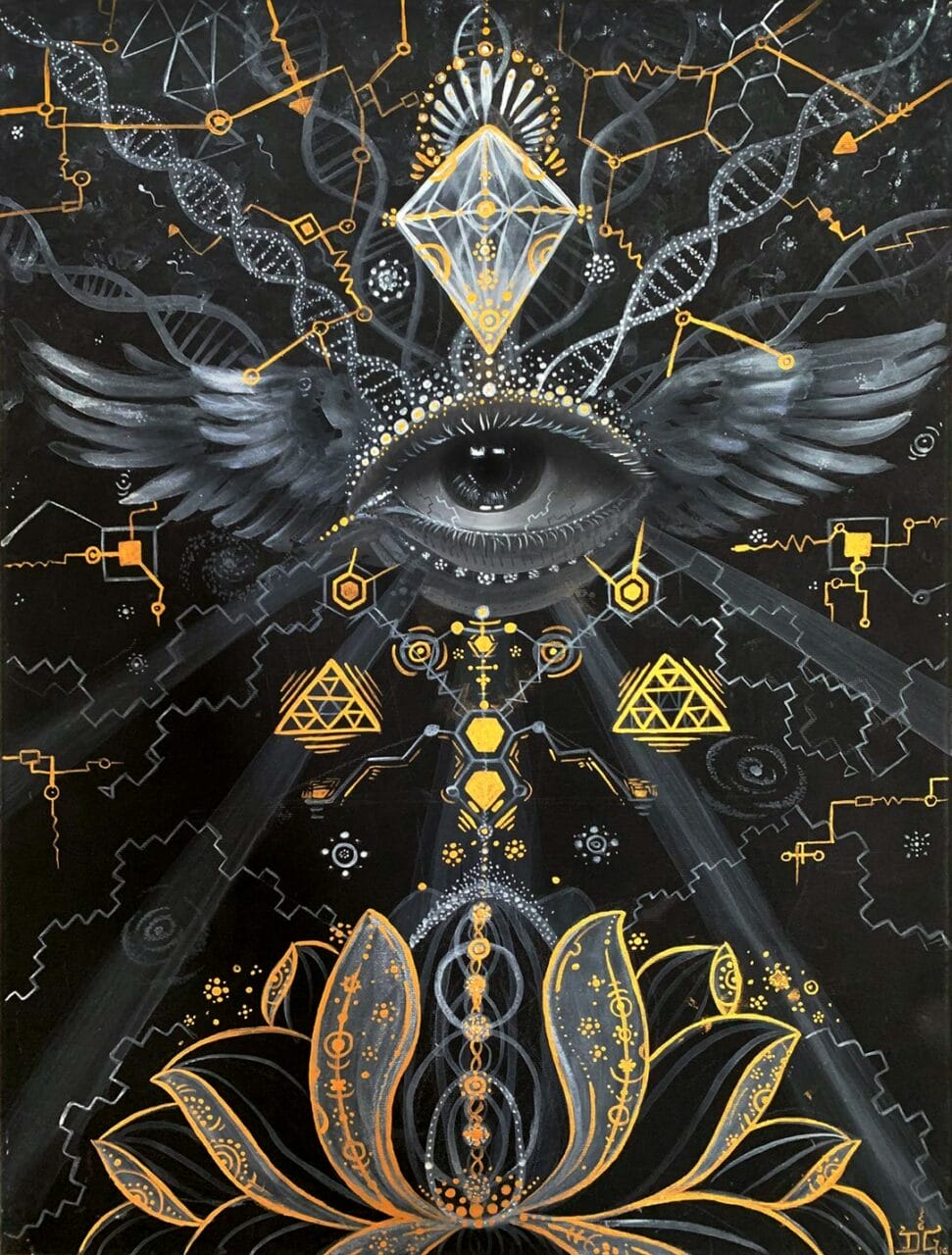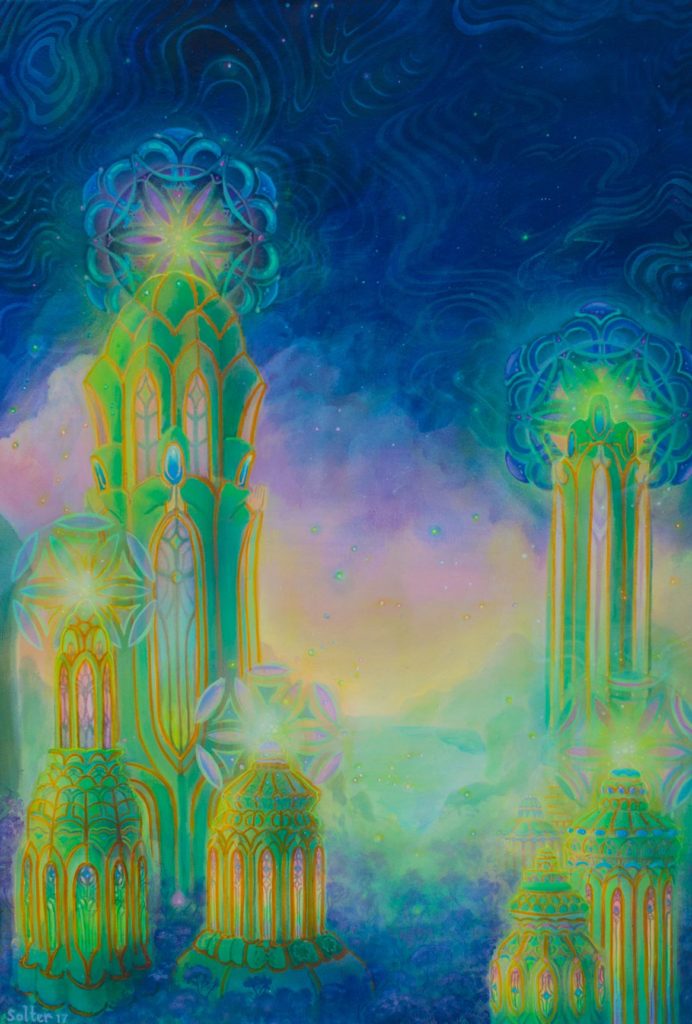
© Uni Kaya
A History of Shrooms
The documented presence of Shrooms goes as far back as 9000 BC. These unique mushrooms, which comprise over 200 distinct species, contain psilocybin, a compound that triggers hallucinogenic effects. These effects can range from altered perception and hallucinations, both visual and auditory, to deep spiritual experiences. Historically, these mushrooms have been used in spiritual ceremonies, rituals, and practices by diverse cultures and tribes for thousands of years. Many of these historical instances originate from North and South America.
Shrooms in Ancient Times
Throughout history, many cultures have used natural psychedelics. Evidence from the Sahara Desert suggests that humans have been using Psilocybe Cubensis for over 7000 years. Archaeological evidence reveals the depiction of this psychoactive substance in prehistoric art from various regions. For instance, the indigenous tribes of North Africa in the Sahara represented its use in their paintings dating around 9000 BC. Similarly, the renowned Selva Pascuala mural rock painting in Spain, approximately 6000 years old, indicates the use of Psilocybe Hispanica in religious rituals. The influence of these substances on our cultural evolution, religion, art, societal norms, and everyday life is increasingly apparent. Undoubtedly, this substance has left a deep mark on our culture and society.
A Brief History of Shrooms Usage
Historically,magic Shrooms have been consumed over a prolonged period. The psychoactive substance that we know today has traversed various centuries, with different practices associated with its use. Who could resist the gifts of nature? It’s about time for Micro Zoomiez Canada to delve into the historical journey that has led Shrooms to its current status.
Major Highlights
- Dried Shrooms have served in traditional rituals and spiritual healing for centuries. Today, they are used as a treatment for mental health disorders.
- Shrooms became a hallmark of the hippie culture and played a crucial role in the psychedelic revolution, encouraging its recreational use.
- Key figures such as Wasson, Sabina, and McKenna brought psilocybin into the mainstream.

© Jonathan Solter
Endorsing the Stoned Ape Theory
Terence McKenna proposed the Stoned Ape Hypothesis, suggesting that psilocybin may have been instrumental in the evolution of human cognition. Despite facing some skepticism, the captivating argument of the theory remains undebatable.
Ancient Civilizations and Holy Rites
Historical cultures depicted cubes in artworks, symbols, and statues, indicating the ceremonial use of Shrooms. The Mayans and Aztecs utilized it for interacting with supernatural beings, including gods. In the culturally rich Aztec society, it was referred to as “teonanácatl“, meaning “flesh of the gods”. The concept of a psychedelic journey was alien to them, hence they regarded it as a divine entity. Venturing north to Siberia, hallucinogenic Shrooms were employed by Siberian shamans. They specifically used the hallucinogenic substance (Shrooms) known as “Amanita Muscaria” for spiritual healing and traditional practices, in spite of its poisonous characteristics. This usage dates back to nearly ten thousand years ago. In African tribal rites, particularly in the Congo and Zimbabwean tribes, cubes were utilized for communicating with ancestors, inducing visions, and promoting spiritual healing. These ancient societies provide context to the contemporary use of psilocybin. The reverence for this substance in these cultures arose from its divine connotations and the ability to trigger mystical experiences.
Shrooms in Legends and Folk Tales
Several accounts, including those by Gordon Wasson, have highlighted the connection between Shrooms and the mystical world, emphasizing its function in folklore and myth as a medium for divine communication and spiritual awakening. In ancient India, the Soma—a ritualistic drink mentioned in the Vedas—was thought to provoke altered states of consciousness. Scholars like Wasson hypothesize that it might have been a brew made from psychoactive plants, specifically fly agaric. Some even suggest that this ancient drink may have been a mix of different plants. Regardless of its origins, the psychedelic history suggests that Soma facilitated the manifestation of sacred symbols during ceremonies, symbolizing a portal to higher wisdom or spiritual enlightenment.
The Contemporary Age
A Brief on the
Origins
Historical texts from the era preceding Columbus’s arrival show that both the Mayans and Aztecs utilized psilocybin Shrooms. The Spanish rulers during the 15th and 16th centuries deemed its use as barbaric and subsequently outlawed it. Despite the ban, shamans secretly continued to consume magic Shrooms, thus maintaining their cultural traditions for over 400 years.
Rediscovery by the Western World
The 1950s witnessed a revival of these substances in the Western world, due to the pioneering work of individuals like R. Gordon Wasson, Roger Heim, and Albert Hofmann. During a voyage to Mexico, they successfully isolated the two psychedelic components (psilocybin and psilocin) present in the Shrooms obtained from the Mazatec tribe. Wasson subsequently shared his discoveries, applications, and perceptions about magic Shrooms in Life magazine. His articles and personal narratives contributed to the recognition of the substance as a potent hallucinogen. By the onset of the 1960s, the substance had become a symbol of the Hippie movement and was perceived as a conduit to spiritual experiences. However, its usage also provoked considerable controversy and initiated a revolution in the recreational use of hallucinogenic substances.
Later Progress: Worldwide Prohibition
In 1971, psilocybin was classified as a Schedule 1 illegal drug by the United Nations Convention on Psychotropic Substances, alongside Lysergic Acid Diethylamide and N, N-Dimethyltryptamine. At that point, they were all believed to have no medicinal value and a high risk of abuse. This resulted in broad criminalization in Western nations, including Canada and the U.S., severely limiting the spiritual and therapeutic uses of the substance.
The Modern Resurgence of Psilocybin
Recently, there has been an easing of the strict laws pertaining to psilocybin usage, beginning with its decriminalization. This shift complies with the UN’s permission for treaty member nations to regulate the substance according to their own rules. Simultaneously, a growing body of research and clinical trials on psychedelics and consciousness strongly suggests potential medicinal uses for psilocybin. A study conducted in 2021 examining the therapeutic use of psychedelics indicates that the 1970 prohibition significantly hampered further research. However, a preliminary study in 2004 rekindled interest in psilocybin, suggesting potential uses in neuropsychiatry, specifically for treating mental health conditions like:
- Depression, Anxiety, and Stress
- Post-traumatic Stress Disorder (PTSD)
- Obsessive-compulsive Disorder (OCD)
- Drug Misuse (Aiding in Addiction Recovery)
- Excessive Consumption of Alcohol and Drugs)
The Influence of Media and Art
The topic of psychedelic cubes has permeated mainstream discussions and found representation in diverse formats. The renewed fascination with these substances is fueled by various media, art forms, and literature. Movies like “Fantastic Fungi” by Director Louie Schwartzberg, and documentaries that delve into their therapeutic effects, have enriched public understanding of the mental and physical implications of these substances. Michael Pollan, author of “How to Change Your Mind,” has explored the use of psychedelics for mental health and spiritual development, thereby reviving interest in their societal and therapeutic implications.
Prominent Historical Advocates of Fungi
- María Sabina: Sabina, a Mazatec shaman and poet from Mexico, was instrumental in bringing cubes to the notice of the Western world. She permitted Wasson to observe her Shrooms rituals.
- Gordon Wasson: Wasson, an author, gained recognition for spotlighting this drug globally. His in-depth accounts of his experiences with Sabina helped broaden understanding of its regional usage.
- Terence McKenna: A vocal proponent of psychedelics, McKenna underscored their cultural and philosophical significance. Through his speeches, writings, and research, McKenna popularized the “Stoned Ape” theory, characterizing it as a cognitive enhancement tool that influenced societal evolution.
Brief Overview of the Timeline
with TRD.
| Prehistoric | Prehistoric usage is evidenced by stone art discovered in the Sahara, Africa |
| Ancient | The Maya and Aztec civilizations incorporated teonanácatl in their religious and spiritual rituals. |
| 16th Century | Usage was discouraged due to its association with Indigenous beliefs |
| 18th Century | The “intoxicating” effects of the drug came into light in 1799 when four children accidentally ingested Psilocybe Semilanceata, underscoring the potential dangers of its use. |
| 20th Century | The drug was introduced to the Western world by Wasson and Sabina, sparking the psychedelic revolution among the hippies. The UN legalized the possession and consumption of the substance. |
| 21st Century | Clinical studies to establish its medical potential are increasing. Health Canada has approved a Special Access Program for its use. |
The Emergence of the Psychedelic Era and Beyond Salvation | Purchase Shrooms Online at Micro Zoomiez Canada
The consistent use of cubes at Micro Zoomiez Canada, supported by robust scientific research, will persistently expand until achieving worldwide recognition. Micro Zoomiez Canada’s online Shrooms store is prepared to facilitate this change. Our extensive array of products entices customers, encouraging them to embark on the intriguing and therapeutic journey of psilocybin. Secure your preferred items from Zoomies today.
Commonly Asked Questions
No, Amanita Muscaria does not contain the active compounds found in Psilocybe Cubensis. Instead, the psychoactive substances in fly agaric are muscimol and ibotenic acid. One prevalent theory about Soma’s origin proposes it to be a mixture of various psychoactive plants. Similarly, ayahuasca is a beverage that alters consciousness. However, the only link between the two is the view of soma as an analogue of ayahuasca. It was examined for potential Shrooms poisoning after being classified as a toxic Shrooms. Today, we recognize it as the Psilocybe Mexicana.

